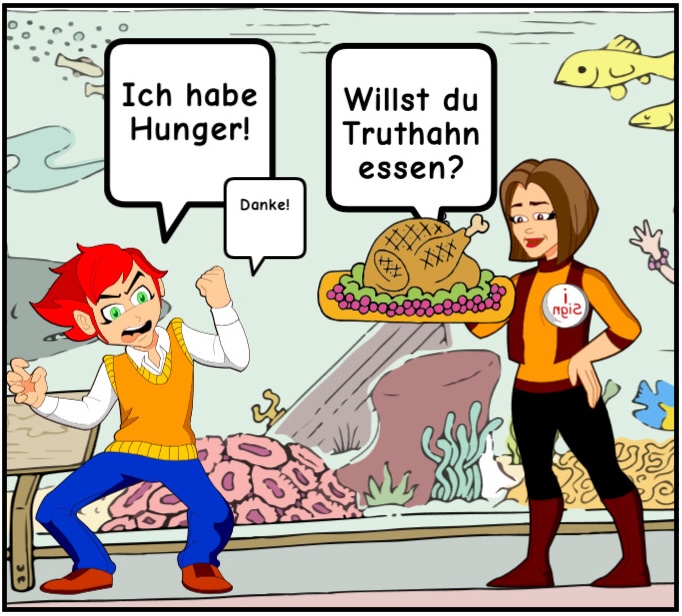6.10 Hunger haben und Essensvielfalt

Servus!
Zum Aufwärmen machen wir unseren Tagesminiplausch und eine Wiederholung.
Wiederholung
In the previous lesson, you learned how to talk about how often you have Nachtisch (dessert), ask others about their Nachtisch preferences, and talk about your Nachtisch preferences. Let’s review what you have learned.
Jetzt bist du dran!
Lektionsüberblick
In Lektionen 6.6 and 6.8, we saw some examples of typical German warm and cold meals. As you can imagine, those examples are not representative of all Germans. The fact that Germany is becoming increasingly multicultural coupled with the German love of travel, it is no wonder that there is a wide variety of cuisines in Germany. This lesson will present you with some of this variety and encourage you to investigate more on your own. In the end, you will be able to 1) say that you are hungry and thirsty, 2) recognize a variety of cultural cuisines, and 3) list what kinds of food you want to eat.
1) Hunger und Durst haben (Hunger and thirst)
Listen to and read along with the following comic. What can you understand?
 |
Let’s practice! Sort the food and drinks into the correct category.
Jetzt bist du dran!
2) die Vielfalt der Küchen (the variety of cuisines)
The melting pot of the US has already brought many kinds of foods together that are considered American foods. What if you want to specify that there is a certain kind of food you like to eat? Read through the following presentation for a small number of cuisines.
Want to be able to talk about more kinds cuisines? Check out the menus on Lieferando.de.
Jetzt bist du dran!
Kleiner Hinweis
Once a meal has been served, Germans generally wish each other Bon Appetit – but in German!
| Guten Appetit! | |
| Laß es dir schmecken! | If you did the cooking and you are eating with one other person. |
| Laßt es euch schmecken! | If you did the cooking and you are eating with more than one other person. |
3) Ich will…essen. (I want to eat…)
Look at the comic again. Do you understand what the woman is asking?

Did you guess that she is asking “Do you want to eat turkey?” The part that means “want” (=willst) looks a lot like the English “will”, but does not mean the same thing! “Ich will” means “I want”.
Talking about what you want to eat uses phrasing that, once again, demonstrates how important it is to begin to think in German instead of saying German words while thinking English ones. Look at the following examples.
| Ich will Schokolade essen. | I want to eat chocolate. | |
| Ich will keinen Kuchen essen. | I do not want to eat cake. (I want to eat no cake.) |
Let’s practice!
Jetzt bist du dran!
Zum Schluß

*As you conclude this lesson, don’t forget to check Canvas!*

Media Attributions
- 1020-banner-large-reduced

